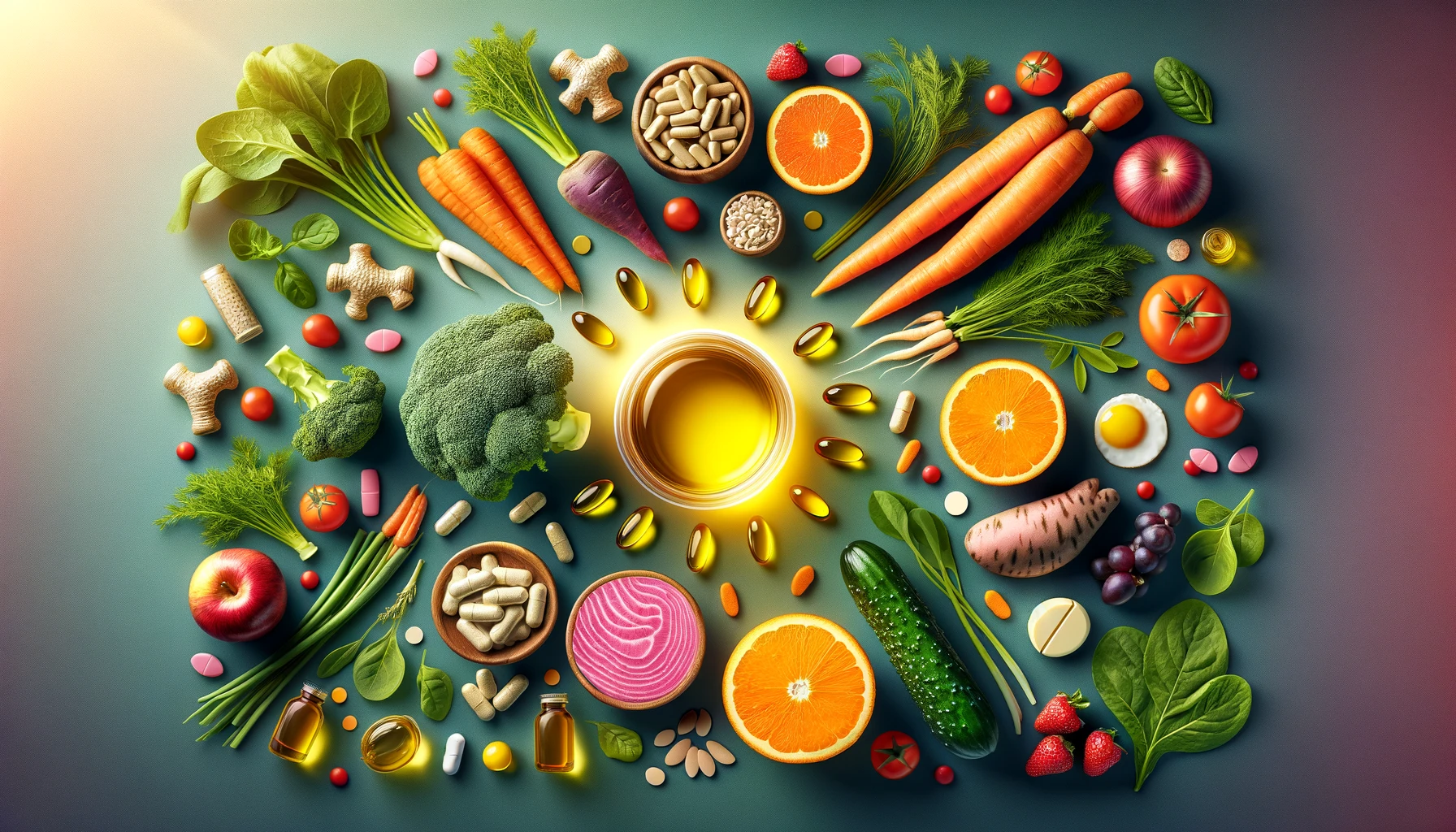
Vitamin A is a fat-soluble vitamin that plays a critical role in maintaining healthy vision, ensuring the proper function of the immune system, and aiding in the growth and development of the heart, lungs, kidneys, and other organs. Beyond these fundamental roles, vitamin A is crucial for skin health and reproductive health, as well as cell division and differentiation.
Health Benefits of Vitamin A
- Enhanced Vision: Vitamin A is vital for converting light that hits the eye into an electrical signal that can be sent to the brain. It is specifically crucial in maintaining night vision.
- Immune Function: It strengthens the immune system by helping to produce and function white blood cells, which fight off infections.
- Skin Health: Vitamin A can aid in skin regeneration and is used in various dermatological treatments for conditions like acne and psoriasis.
- Reproductive Health: It plays a role in the normal formation and maintenance of the heart, lungs, kidneys, and other organs.
Risks of Consuming Too Much Vitamin A
While vitamin A is essential for health, excessive intake can lead to hypervitaminosis A, a condition resulting from vitamin A toxicity. Symptoms may include nausea, jaundice, irritation, loss of appetite, blurred vision, headache, muscle pain, and in severe cases, liver damage or coma. Chronic overconsumption can lead to increased intracranial pressure, dizziness, nausea, headaches, skin irritation, pain in joints and bones, coma, and even death. Pregnant women need to be particularly cautious as high amounts of vitamin A can cause birth defects.
The Tolerable Upper Intake Levels (UL) for vitamin A, according to the National Institutes of Health (NIH), are as follows:
- Adults and children over 3 years: 3,000 mcg RAE (Retinol Activity Equivalents)
- Children 1–3 years: 600 mcg RAE
- Infants 0–12 months: 600 mcg RAE (as a precautionary maximum)
Foods High in Vitamin A
Vitamin A comes in two primary forms in the diet: preformed vitamin A (retinol and retinyl esters), found in animal products, and provitamin A carotenoids, found in fruits and vegetables. Beta-carotene is the most well-known carotenoid.
- Liver: Beef liver is one of the richest sources of vitamin A, with a 3.5-ounce (100-gram) serving providing more than 700% of the DV.
- Carrots: One medium raw carrot offers 509 mcg of RAE of vitamin A, which is 56% of the DV.
- Sweet Potatoes: One medium baked sweet potato provides 1,403 mcg of RAE, which is over 100% of the DV.
- Spinach: A half-cup of boiled spinach contains 573 mcg of RAE, which is approximately 64% of the DV.
- Dairy Products: Products like cheese and whole milk are good sources of preformed vitamin A, with a cup of whole milk offering about 149 mcg of RAE (about 16% of the DV).
Conclusion
Vitamin A is indispensable for a variety of bodily functions, from maintaining good vision to ensuring the proper operation of our immune system. However, it’s crucial to consume it in moderation due to the potential risks associated with overconsumption. A balanced diet rich in fruits, vegetables, and animal products can help most people meet their vitamin A needs without the need for supplements. As with any nutrient, if you’re considering supplements or making significant dietary changes, it’s best to consult with a healthcare provider.